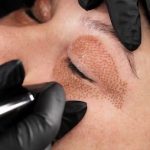 Type of cell that synthesizes the extracellular matrix and collagen, the structural framework (stroma) for animal tissues, and play a critical role in wound healing.
Type of cell that synthesizes the extracellular matrix and collagen, the structural framework (stroma) for animal tissues, and play a critical role in wound healing.
Connective tissue cell located near collagenous fibers which develop into fibers.
A long flat cell found in connective tissue, which develops into collagen.
The principal connective tissue cell; a flattened, irregularly branched cell with a large, oval nucleus that functions in the production and remodeling of extracellular matrix.
Cells that are precursors to the connective tissue cells found in the skin. They make structural proteins like collagen, which gives skin its strength. Because fibroblasts do not express antigens on their cell surfaces (free standing, separated), fibroblasts possess potential for use in making artificial organs (e.g., artificial pancreas for diabetics), since recipent immune system cannot recognize the fibroblast cells as foreign.
Cells that give rise to connective tissue.
Connective tissue cells that synthesize interstitial fibers and gels.
Progenitor cells that can differentiate into other more specific cells
Cell that gives rise to connective tissue; produces collagen, elastin, and reticular protein that are the precursors of bone, collagen, and other connective tissue cells.
A widely distributed cell in connective tissue that is responsible for the production of both the ground substance and of the precursors of collagen, elastic fibers, and reticular fibers.
Cells distributed widely throughout connective tissue that produce the precursor substances of collagen, elastic fibres and reticular fibres.
Any cell from which connective tissue develops; it produces collagen, elastin, and reticular protein fibers.
A significant, flattened cell responsible for producing the proteins essential for the formation of collagen and elastic fibers, as well as the substance that resides between the cells of connective tissue.